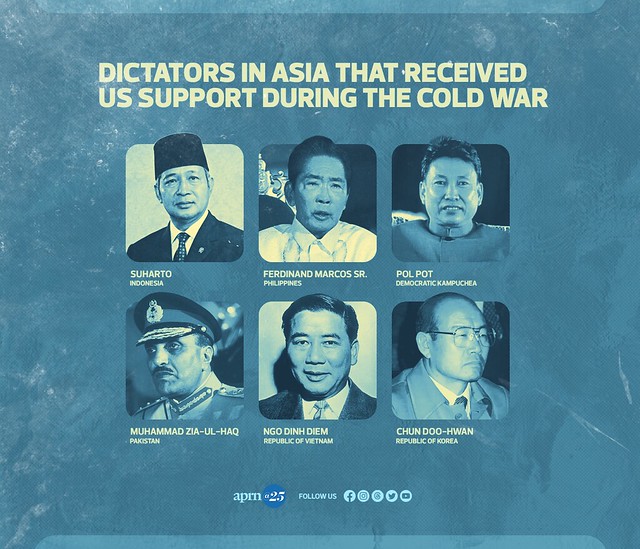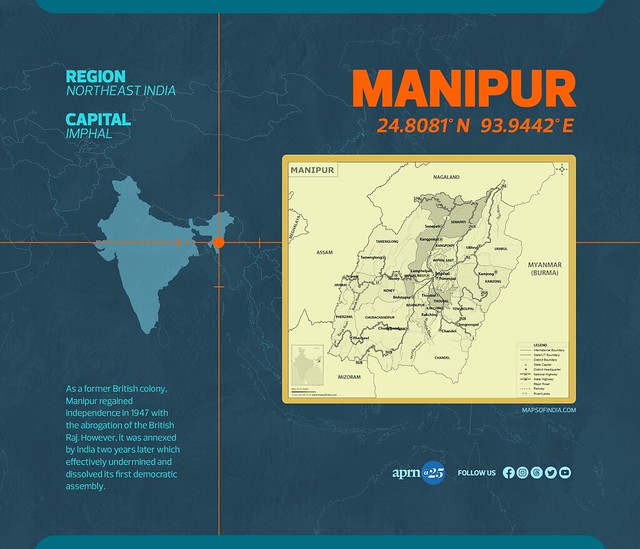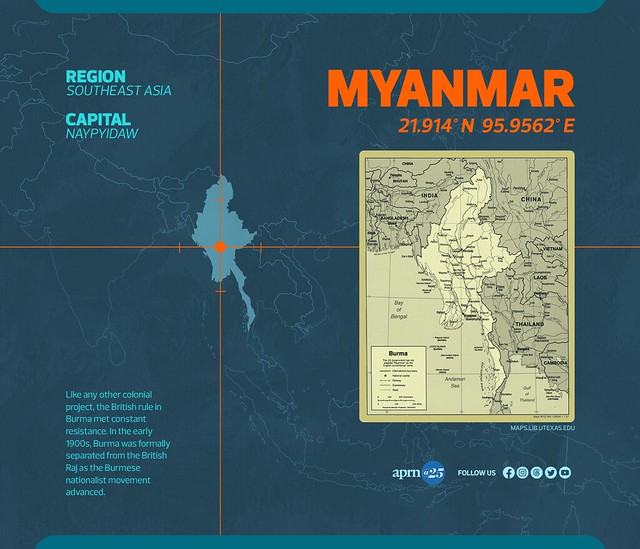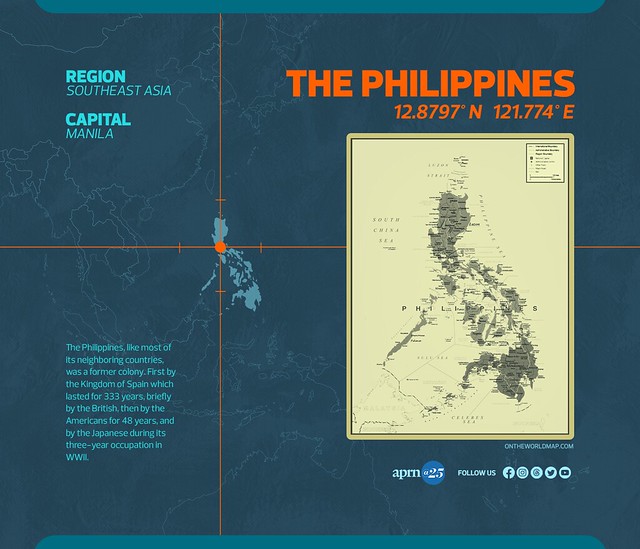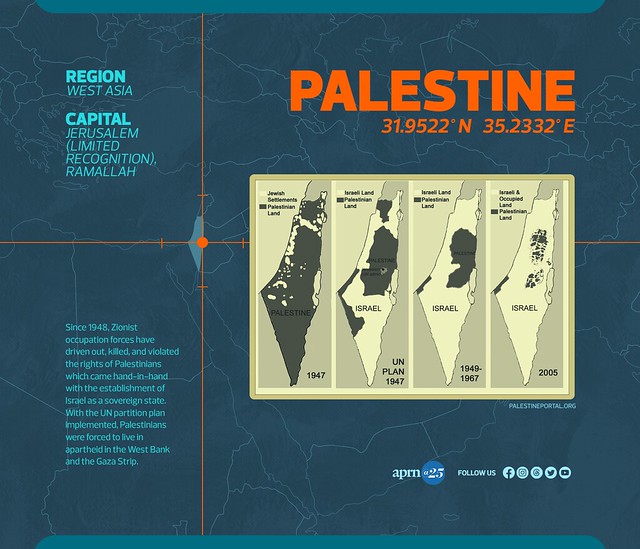INTRODUCTION
Since the advent of civilization, the pursuit of economic and political power has led to the imposition and enforcement of authority over people and territories. This phenomenon, with eternal recurrence in the history of humankind, brought ‘states’ to existence.
States of colossal economic, political, and military strength that spanned across countries, regions, and continents eventually came to be known as empires; where all are subjected under absolute control of a single ruler.
Among the most notable empires in human history are the Roman, British, and Spanish empires, most of which have more or less controlled large parts of Asia.
These Western empires, over centuries, became more powerful as they subjugated and dominated territories by colonizing them through expeditions. An overseas representative bureaucracy ruled over the body politic of the colonies and the rule of force came with it.

Despite the difference in methods, geographical scope, and respective historical epochs, old empires and colonial powers sought the same imperial ambitions.
By the mid-20th century, before and until the end of World War II, however, the colonial control of Britain, France, Germany, Spain, Portugal, Netherlands, and other European powers started to disintegrate in Asia, Africa, Latin America, and elsewhere in the world as national liberation movements became stronger and gained popular support and traction.
Fast forward to the 21st century, as the Western hegemony confronts decline, global superpowers continue to pursue ultimate dominance. This time through imposing the logic and laws of the market which is called neoliberalism.
In studying and analyzing this epoch of globalization, it is important to highlight the decisive role of 19th-century American colonialism and imperialism. Despite national liberation and social movements’ use of “US imperialism,” some scholars argue that recognition and study of American imperialism as an Empire came late, only starting in the 1990s. [2]
While the setting is far beyond the feudal empires of the 9th until 15th century and the industrial backdrop of 19th-century capitalism, imperialism continues to violently dominate countries to maintain and expand its power in the name of profit—especially the US which is the focus of this article.
IMPERIALISM AND WAR IN THE 21st CENTURY [3]
To this day, the slogan “imperialism means war” holds.
In the current context where the friction between contemporary global superpowers is intensifying, it is important to underscore that part of the nature of the capitalist crisis is the outbreak of armed conflict and war.
From the resurrection of the Ukraine-Russia conflict two years ago to the recent upheaval of the Palestinian resistance against the Zionist occupation on last 7th of October 2023, imperialist interests are openly seen—thus proving the clarity of Vladimir Lenin’s analysis of imperialism and its most catastrophic product: war.
Lenin’s 5-point Definition of Imperialism
1) the concentration of production and capital has developed to such a high stage that it has created monopolies that play a decisive role in economic life
2) the merging of bank capital with industrial capital, and the creation, based on this “finance capital”, of a financial oligarchy
3) the export of capital as distinguished from the export of commodities acquires exceptional importance
4) the formation of international monopolist capitalist associations that share the world among themselves
5) the territorial division of the whole world among the biggest capitalist powers is completed. Imperialism is capitalism at that stage of development at which the dominance of monopolies and finance capital is established
The whole world, including terrestrial and fluvial territories, is continually being divided among great imperialist powers, with Western countries such as the US, Britain, and European governments conspiring to maintain the status quo where their interests reign supreme.[4] With China and Russia entering the global arena for expansion and control, the instability of US and Western hegemony is further exposed as it is threatened.[5]
All of these superpowers are waging a variety of economic, political, and military tactics and strategies to acquire and place countries under their spheres of influence. This is to ensure that the countries under their control provide 1) a captive market for surplus capital and goods, 2) a source of cheap raw materials, and 3) a source of cheap labor power. This is the purpose of multilateral free trade agreements (FTAs) such as the General Agreement on Tariffs and Trade (GATT) as enforced by international financial institutions (IFIs) like the World Trade Organization, International Monetary Fund, and the World Bank; and, the Regional Comprehensive Economic Partnership (RCEP) which is promoted by the ASEAN.
Neoliberalism, the newest stage of colonialism
What is now known as neoliberal globalization is imperialist control. Through various policies of liberalization, privatization, and deregulation, masked as global integration by IFI’s programs and FTAs, entire economies are being engulfed by imperialist superpowers.
Liberalization, privatization, and deregulation are commonly considered the main three (3) pillars of neoliberalism. Through undermining protectionist policies, a country becomes a hostage of global corporate interests. Its local and native comprador and capitalist classes become tools of imperialist countries and multinational and transnational corporations (MNCs and TNCs).
With the world’s economic super elite controlling much of the world’s production, trade, and market, the neoliberal hegemony of the world capitalist system is aptly referred to as ‘neocolonialism’ by its critics; and the global superpowers are contending over new neocolonies.
The Indo-Pacific Strategy and the Pivot to Asia
When discussing the current inter-imperialist rivalry between superpowers, it is important to highlight the main dominant force in the global arena: the United States.
The consistently expanding economy of the Asia Pacific contributed over ⅔ of the world’s economic growth in 2023 despite a slump in the preceding year.[6] Hence, imperialists especially the US did not turn a blind eye to and had to devise strategies to ensure its power in the region as their economies continued to decline. China remains a formidable player and regional counterpoint despite its recent economic slowdown.[Ibid]
As the US pursues its “engagement and containment” policy on China and deterrence strategy on Russia, it mobilizes its old allies into new military agreements.[7] The AUKUS and Quad which the US leads are created to “stabilize” the Indo-Pacific region. One does not need to read between the lines that this aims to “counter” China and “fend off” Russia.[Ibid.]
Imperialism means war
As imperialists expand their network of neocolonies and their spheres of influence, their rivaling superpowers retaliate in violent and nonviolent forms (usually through highly repressive policies designed to quell any form of organized assertion of rights and resistance). From the Triple Alliance to the Triple Entente in WWI, the Allied and Axis powers in WWII, to the formation of NATO, SEATO during the Cold War, and the 21st-century international “security pacts”, imperialists are divided into opposing camps. Hence, war always looms.
To ensure their domestic hold on power, imperialists heavily support and finance their neocolonial state security forces. This is to primarily suppress and smash dissent, especially by movements for national liberation, freedom, and self-determination. Genuine independence, which these movements espouse, undermines their control and thus threatens the hegemony of the world capitalist system.
The US Counterinsurgency Program[8]
“…the U.S. is acting to best plan, prepare, conduct, and assess a counterinsurgency operation to protect national interests. Countering an insurgency should incorporate previous or continuing security cooperation efforts and other activities.”
The best case study in this regard is the US and its billions of dollars spent to beef up its military-industrial complex.[7]
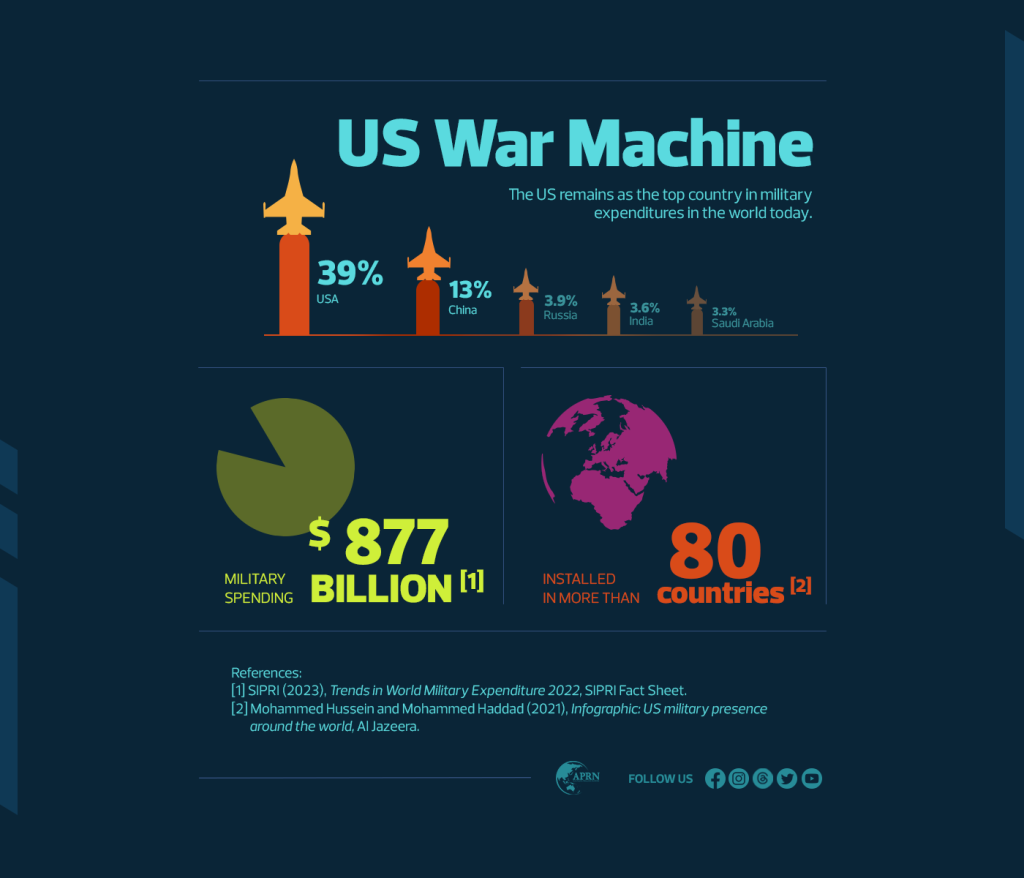
As seen in history, the US has supported dictators before, during, and even after the Cold War to ensure its economic and political interests in their neocolonies and further extend its control.[9] It maintains its presence in over 80 countries and sustains over 700 military bases outside its soil. More importantly, there are over 173,000 US military troops stationed in 159 countries outside American soil.
The US, time and again has involved itself in civil wars abroad, supported its domestic benefactors, and facilitated regime changes. The same goes for other imperial powers such as the former Soviet Union (after Stalin), France, Britain, and others.
In this era of the global capitalist system’s decline, imperialist superpowers have stakes in wars of aggression, civil wars, and national liberation struggles and are eager to emerge as the victor—while the people get scraps and spoils.
US imperialist’s rule and repression – as well as the people’s resistance that it fuels – can be seen clearly in four areas where armed conflicts are raging at present: Manipur, Myanmar, Palestine, and the Philippines These countries show the various forms that imperialist rule and people’s resistance take in concrete conditions.
Manipur[10]
Manipur is one of the “Seven Sisters” of the Northeast Indian states—a region that shares borders with China, Nepal, Bangladesh, and Myanmar. It is a small state with a decades-long self-determination struggle and decades of aggressive military response.[11]
As a former British colony, Manipur regained independence in 1947 with the abrogation of the British Raj. However, it was annexed by India two years later which effectively undermined and dissolved its first democratic assembly. From there on, liberation movements were formed to combat India’s control and establish an independent Manipur based on democracy and self-determination. Among these are the Revolutionary People’s Front (RPF) and its armed wing People’s Liberation Army of Manipur (PLA-MP) and the United National Liberation Front (UNLF).
In the past decades, the US, Europe, Japan, and other developed countries entered investments with the Indian government in Manipur. There has been an increasing number of projects in Manipur that concern its natural resources, especially its rivers. Extractive industries that use unsustainable energy have been operating as well as plantations that were pushed by MNCs with support from the World Bank, the Asian Development Bank (ADB), the Asian Infrastructure Investment Bank (AIIB), and European investors.
These “development projects” cause displacement of Manipur’s native local population and human rights violations. Many community leaders fell victim to extrajudicial killings, detention, and other forms of violations while subjecting entire communities to exploitative and extractive economies.
As Western imperialists attempt to thwart its East Asian rival’s One Belt, One Road (OBOR) also known as the Belt and Road Initiative (BRI), the threat of being caught in the inter-imperialist crossfire becomes imminent, especially since India’s BJP-led government is becoming more pro-US while maintaining its membership in the BRICS (intergovernmental organization with Brazil, Russia, India, China, and South Africa as the primary members).[12][13]
What comes with the imperialist neoliberal push in Manipur’s economy is heightened military rule vis-a-vis an unyielding resistance movement. With the Burmese anti-junta struggle in its borders, the conflict spills over that induces the Indian government to increase its fascist and militarist response in the guise of territorial security.[14] Indeed, Manipur has become a “disturbed area” due to India’s state fascism and imperialist neoliberal exploitation.[15]
The inter-imperialist rivalry between US and China along with India’s neoliberal impetus (including the recent Farm Laws) and involvement in Quad is crucial to Manipur’s self-determination. India remains among the top five in the world in terms of military expenditures which in effect creates a multiple layer of conflict.[16]
Myanmar[17]
Myanmar, also called Burma, is among the territories in Mainland Southeast Asia under British rule as the British Raj[18] expanded eastward from the Indian subcontinent in the early 1800s.
Like any other colonial project, the British rule in Burma met constant resistance. In the early 1900s, Burma was formally separated from the British Raj as the Burmese nationalist movement advanced.
By 1942, at the bisection of WWII, Japan invaded Burma and established a puppet independent state.[19] Shortly after the Axis defeat, the British Empire relinquished control of its colonies granting them independence.
In 1948, the first independent Burmese government under Prime Minister U Nu sparked ethnic uprisings due to its disregard of the 1947 Panglong Agreement.[20] He was deposed and replaced by General Ne Win’s military dictatorship.
From 1962 to 1988, Myanmar was under a dictatorship until Ne Win’s resignation in the same year following the 8888 uprising.[21] However, the military rule continued and repressed the pro-democracy resistance, especially after its electoral defeat in 1990.
In 2008, a new constitution was adopted to “democratize” the Burmese government yet ensured that the military occupies a significant number of seats in the parliament (25% of 440) as appointed by the Myanmar Defence Services’ Commander-in-Chief.
The 2015 Myanmar general elections were historic as the National League for Democracy (NLD) won a supermajority in the parliament. This was celebrated globally as the NLD espoused the ideals of Western-style democracy.
In the following general elections held in 2020, the NLD claimed another victory with 3 additional seats in the parliament. However, the military declared the results null and void and launched a coup d’etat three months later effectively deposing the NLD-administered government and re-establishing martial rule (via the formation of the State Administration Council or SAC).
The return of the military government led to the formation of the People’s Defence Force (PDF) which is composed of youth activists and supporters of the shadow National Unity Government (NUG).[22] The Communist Party of Burma (CPB) also mobilized and re-established its armed wing, the People’s Liberation Army to wage a People’s War against the junta’s repressive dictatorship.[23]
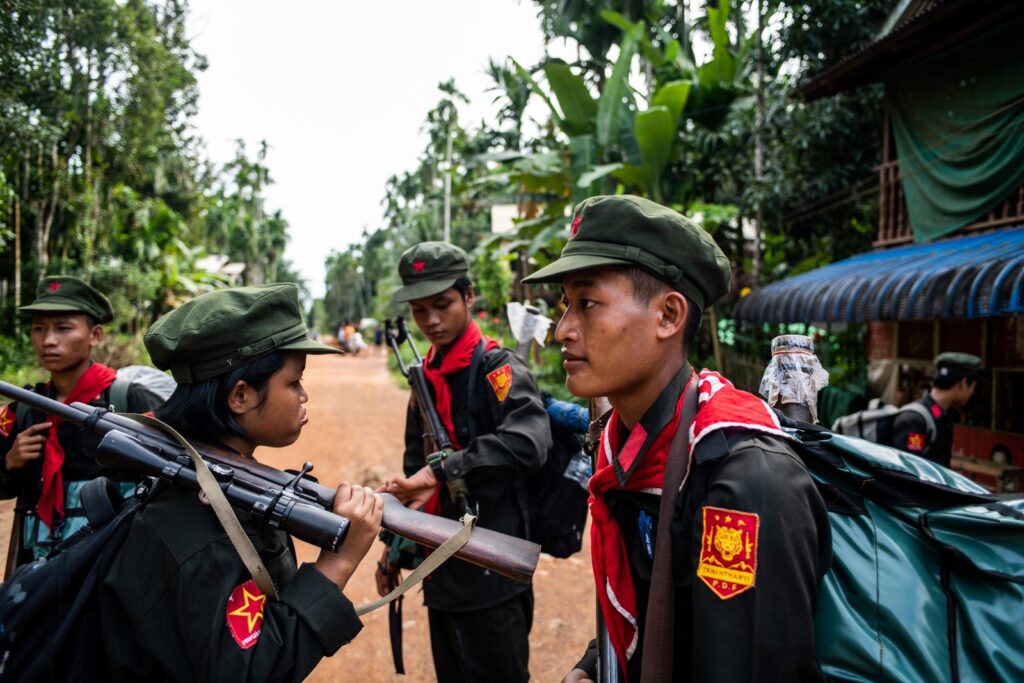
In 2023, the Brotherhood Alliance (composed of 3 armed ethnic groups) and other anti-junta forces made successful offensives that pushed back the SAC forces. Reports state that the junta lost its hold in key territories on the northern border with China and the West side of the Indian border. There are also reports of mass defection of military personnel in favor of the PDF and other anti-junta groups.
As of this writing, anti-junta troops continue to advance as the Myanmar state forces suffer great losses.
Philippines[24]
The Philippines, like most of its neighboring countries, was a former colony. First by the Kingdom of Spain which lasted for 333 years, briefly by the British, then by the Americans for 48 years, and by the Japanese during its three-year occupation in WWII.

Under the US colonial rule, 10% of the population was killed which essentially makes the Philippines the “first Vietnam” and “first Iraq”. The US implemented war crimes to subdue the Filipino resistance which was fresh from its advances against the weakened Spanish colonial rule (before the latter sold the Philippines and ceded its control to the US).
Before WWII, the US colonial government enacted the Tydings-McDuffie Act for the Philippines’ independence through a 10-year “transitional period” that ensured full independence in economic and political terms would be impossible.
After WWII, the US “granted” the Philippines’ independence by strengthening its political and economic ties with the subservient domestic bureaucracy through Parity Rights which effectively established it as its neocolony in the Pacific.
The Philippines was a military asset to the US and established two major military bases in Subic and Clark, with the latter being the biggest military base outside American soil for a time. It thus turned the Philippines into a staging and rehearsal ground for invading neighboring Asian states, especially in mainland Southeast Asia (often called “Indo-China”).
The subservience of the Philippine government to the US was met with resistance ever since its establishment as a neo-colonial state. All presidents, from Magsaysay to Macapagal, launched witch-hunting operations to quell the anti-imperialist resistance movement primarily led by workers and peasants. However, under the 22-year dictatorship of Ferdinand Marcos Sr., the Filipino national liberation movement found renewed vigor. The people’s war waged by the New People’s Army was instrumental in the resistance against the state tyranny and dictatorship.
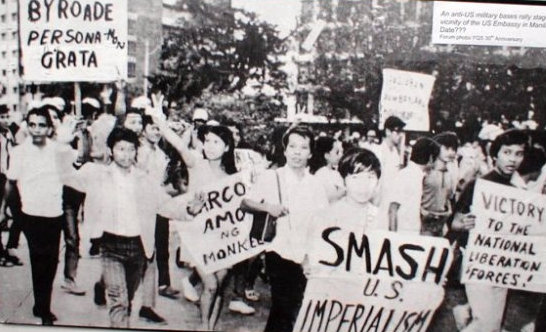
After Marcos’ martial rule and the “return of democracy”, neoliberal economic policies worsened. Succeeding regimes also remained loyal to the American empire as political repression continued.
In 1992, the anti-US bases campaign succeeded which forced the US to pull out its troops and leave Philippine soil. Despite this victory, the following presidents signed bilateral agreements that are favorable to the US military such as the Enhanced Defense Cooperation Agreement (EDCA). Thus, the Philippines easily became the US’ “second front” during the height of its Global War on Terror.
Fast forward to 2016, Rodrigo Duterte, the 16th president deceived the hopes of the Filipino people in taking the nationalist road to development. In practice, his administration simply accommodated more Chinese investments while maintaining US relations and aggressively attacked the resistance and the people’s movement. The regime imposed authoritarian policies leading to the undermining of civic spaces and criminalization of activism with the enactment of the Anti-Terrorism Law of 2020.
After Duterte’s turn, the son of the former dictator Marcos questionably won the presidency in 2022. State terrorism persists and worsens as Marcos Jr. envisions a rekindled relationship with the US while keeping mum on China’s expansionism on Philippine territory.
With the intensifying rivalry between the US and China, the Philippines is vulnerable to being caught in the inter-imperialist conflict.
Palestine[25]
From 1920 to 1948, the British Crown controlled the Palestinian territory and designated it as “Mandatory Palestine”. This period, preceded by the Balfour Declaration of 1917, fermented the Zionist colonial occupation which for 75 years and counting, plagued the country.[26] Within this period, from the 1920s to the late 1930s, the British facilitated the immigration of European Jews to Palestine which foretold the Nakba of 1948.[Ibid.]
Since 1948, Zionist occupation forces have driven out, killed, and violated the rights of Palestinians which came hand-in-hand with the establishment of Israel as a sovereign state. With the UN partition plan implemented, Palestinians were forced to live in apartheid in the West Bank and the Gaza Strip.[27] This precipitated a series of intifadas and eventually gave birth to the Palestinian resistance and liberation movement, most notably the Palestinian Liberation Organization (PLO) and its member organizations, and the more religious-leaning Hamas and the Palestinian Islamic Jihad (PIJ).[28]
The imperialist involvement in the Zionist occupation has been instrumental since Israel’s statehood. The US government has supported, pampered, and ushered it into a formidable power in economic and military terms in West Asia.[29]

The Western model of peace processes including the UN resolutions for almost every decade, divided the Palestinian resistance as it continuously disregard their right to self-determination and accommodated the genocidal state of Israel.[30] It has failed since then and for three straight years, 2021, 2022, and 2023 were successive “deadliest year/s” for Palestinians.[31][32][33]
Recent developments in the Palestinian resistance such as the Al Aqsa Flood last 7 October 2023 further exposed the complicity of the Western imperialist powers and even UN agencies. On the other hand, it successfully challenged and defeated the Western and Zionist narrative of dehumanizing Palestinians as terrorists. But Israel, despite global condemnation, continues its offensives and received about 10,000 tons of foreign weapons and war materiel—all of which are being used against Palestinians living in Gaza.
With the continuing bombardment and brutal military action by the Israeli Occupation Forces (IOF), the death toll in Gaza is now over 26,000.[Ibid.] More than 60,000 are seriously injured but only a few hundred were allowed to pass through the Egypt border for treatment—while hospitals in Gaza are continuously being leveled to the ground via aerial bombings.
As the IOF continues to implement the harshest military repression, the Palestinian internal refugees are subjected to restriction of movement and many are facing starvation (which has drastically risen since the 7th of October 2023).[34][35]
The decades-old ethnic cleansing in Gaza and the whole Palestinian land is being done by Israel with the dictates of the US and for the benefit of its other Western benefactors such as Germany, France, and others. On the other hand, the Palestinian resistance movement, despite being fragmented, remains steadfast in reclaiming their land and rejecting the false “two-state solution” that is being promoted by imperialist Western states.
The permanence and evolution of people’s resistance
Manipur, Myanmar, Philippines, and Palestine show us parallel examples of imperialist rule and the repression it entails.
We have seen in the case of the Philippines that US imperialism supports any incumbent government as long as it kowtows to its dictates. Meanwhile in Palestine, it supports a colonialist power that carries out genocide to advance its geopolitical and economic interests in the Arab region. It is ready to take action in Manipur if the BJP government asks for its help.[36] The US sanctioned the Burmese junta as it went against its will—not in the name of democracy but to seize the opportunity to gain a foothold in East Asia’s mainland.[37][38]
Despite the layers of differences, the common ground among these areas is that they are previous colonial projects that persevered to gain full independence and assert self-determination against repressive and imperialist powers.
In the Philippines, the Communist movement leads a national democratic revolution; in Palestine, the resistance groups of different political tendencies share a strong Arab nationalist character. In Manipur, communist and oppressed indigenous groups bear arms against the fascist and largely Hinduist BJP government. In Myanmar, the anti-junta resistance is composed of Communist, ethnic nationalist, and democratic movements. This just shows the diverse forms of people’s resistance to imperialism can take.
History tells us that oppression begets resistance. Hence, imperialist domination, through neocolonial control, occupation, and invasion sparks dissent and discontent; The local and native representatives and emissaries of foreign masters, despite masquerading as champions of nationalism, are bound to fail in pacifying the people’s aspiration for freedom and self-determination.
The recent events following the military takeover in Myanmar and the succeeding advances of the Palestinian resistance prove that injustice, when push comes to shove, forces the oppressed to take up arms and fight back. Side-by-side, the multiplicity of tactics and strategies including non-violent forms (such as the Boycott, Divestment Sanction Movement against Israel) and civil disobedience, complement these struggles.
But aside from different forms of struggles, the societal crisis brought by the decay of the capitalist neoliberal global system also led to the unending creativity of mass movements in organizing. This includes the mobilization of informal workers, integrating social media in campaigning and spreading advocacies, and the use of the internet to combat imperialist and fascist state propaganda. And in the context that disinformation is in the frontlines of propaganda war, combatting it creates a new front in which resistance forces are required to make advances.
From this point in history, the role of journalists, writers, and artists to become truth-tellers and to speak with the oppressed becomes urgent and crucial. The same goes for academics and researchers. While the researchers’ and academic intellectuals’ job is to understand both sides of history, it is also their job to pick the side of justice—to use their capacities to expose social ills and complement the unwavering will of the people to resist and to challenge the status quo and established norms and truths. #
[1] This article is an output of APRN’s discussion on Imperialism & War last December 2023 which featured four (4) countries with ongoing wars and conflict.
[2] Cultures of United States Imperialism, ed. By Amy Kaplan & Donald E. Pease, 1993
[3] Derived from Sarojeni Rengam’s presentation in a discussion on Imperialism and Wars of Aggression, 2023
[4] Derived from The Power Play: Unraveling US Military Agreements in the Asia Pacific, APRN, 2023
[5] The US’ intensified pivot to Asia, is a threat to peace and fans the flames of war, APRN, 2022
[6] Asia Pacific economy status based on the Regional Economic Outlook For Asia and Pacific (October 2023), IMF, 2023
[7] A current look at the US Military Presence in the Asia Pacific, APRN, 2023
[8] Lifted from Insurgencies and Countering Insurgencies (field manual), U.S. Department of the Army, 2014
[9] Against Empire, Michael Parenti, 1995
[10] Derived from Jiten Yumnam’s presentation in the aforementioned discussion.
[11] Manipur has been under military rule through the Armed Forces (Special Powers) Act since 1958.
[12] The Bharatiya Janata Party or BJP is a right-wing supermajority political party led by Indian PM Nahendra Modi
[13] In a Joint Statement, India and the United States vowed to increase their strategic partnerships, The White House, 2023
[14] Myanmar instability, weapons with Manipur warring groups have grave implications for State: Kalita, The Hindu, 2023
[15] The government of India designated Manipur, Assam, and other states as “disturbed areas” — where national liberation, secessionist, and resistance movements are present.
[16] India’s military spending 3rd highest in the world after US, China, Deccan Chronicle, 2022
[17] Derived from Zar Zar Tun’s presentation in the aforementioned discussion, 2023
[18] Also known as the Crown rule in India, the British Raj is the British colonial rule of India from 1850s to 1947
[19] The State of Burma was declared by Japanese occupation forces in 1942 with Ba Maw as the Prime Minister.
[20] The Panglong Agreement was a 1947 agreement between the Burmese interim government under Aung San and Chin, Shan, Kachin, and other ethnic minorities recognizing their full autonomy.
[21] The 8888 uprising was a series of nation-wide protests culminating in August 1988 and forcing General Ne Win to resign.
[22] The Burmese government in exile led chiefly by the NLD
[23] The CPB re-established the PLA in March 2021, one month after the coup.
[24] Derived from Mong Palatino’s presentation in the aforementioned discussion, 2023
[25] Derived from Firas Al Jaber’s presentation in the aforementioned discussion, 2023
[26] A concise briefer on the Balfour Declaration was published by Al Jazeera in 2018
[27] The UN General Assembly Resolution 181 effectively divided Palestine into the West Bank and the Gaza strip.
[28] Intifada means ‘uprising’ in Arabic and has been used historically by the Palestinian resistance fighters to refer to major offensives
[29] The US has been supportive of Israel since its statehood. For further reading: Zooming in on the US Empire’s unconditional support to Israel, APRN, 2023
[30] Since the 1960s, the peace process after the many skirmishes between the Palestinian resistance and the Israeli Occupation Forces failed, Vox, 2023
[31] 2021 was the deadliest year since 2014, Israel killed 319 Palestinians in oPt 5-year record in house demolitions: 895 Palestinians lost their homes, B’Tselem, 2022
[32] 2022 was deadliest year for West Bank Palestinians in nearly two decades, The Washington Post, 2022
[33] 2023 marks deadliest year on record for children in the occupied West Bank, ReliefWeb, 2023 Gaza Death Toll Climbs Above 26,000, Health Ministry Reports, VOA News, 2024
[34] In a report by the Human Rights Watch, Israeli forces used starvation as a weapon of war, Human Rights Watch, 2023
[35] Food Security Update for Internally Displaced Populations in Southern Gaza Strip, UN World Food Programme, 2023
[36] U.S. ready to help in Manipur if asked, says Eric Garcetti, The Hindu, 2023
[37] US Relations with Burma, Bureau of East Asian and Pacific Affairs, US Department of State, 2023
[38]US Policy on Myanmar and Taiwan: Shifting Strategies to Counter China’s Influence, The Diplomat, 2023


